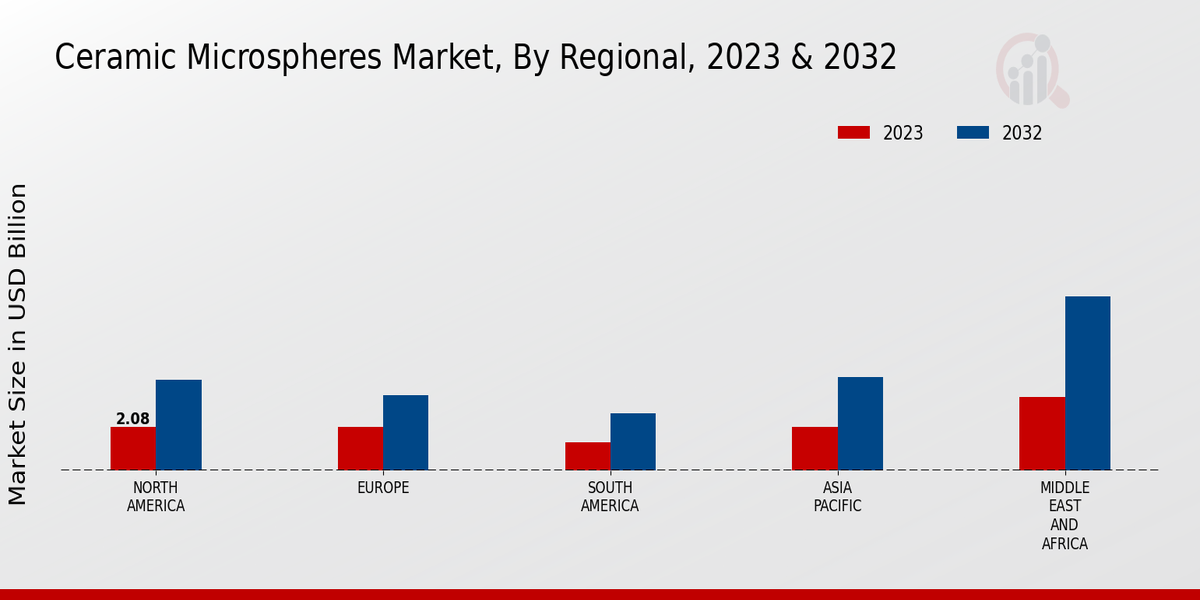Market Trends and Projections
Rising Demand in Oil and Gas Sector
The Global Ceramic Microspheres Market Industry experiences a notable surge in demand from the oil and gas sector, where these microspheres are utilized for enhancing drilling efficiency and reducing weight in drilling fluids. As the industry seeks to optimize operations, the lightweight nature of ceramic microspheres allows for improved performance and cost-effectiveness. This trend is particularly evident as the market is projected to reach 13.1 USD Billion in 2024, reflecting the increasing reliance on advanced materials in resource extraction. The integration of ceramic microspheres into drilling applications not only enhances operational efficiency but also contributes to sustainability efforts within the sector.
Advancements in Medical Applications
The Global Ceramic Microspheres Market Industry is witnessing advancements in medical applications, particularly in drug delivery and imaging. Ceramic microspheres are utilized for their biocompatibility and ability to encapsulate therapeutic agents, enhancing the efficacy of treatments. The growing focus on precision medicine and targeted therapies is likely to drive demand for these materials in the healthcare sector. As the industry evolves, the integration of ceramic microspheres into medical devices and treatments may lead to improved patient outcomes. This trend suggests a promising future for the market, as innovations in healthcare continue to expand the applications of ceramic microspheres.
Increased Focus on Lightweight Materials
The Global Ceramic Microspheres Market Industry is propelled by an increased focus on lightweight materials across various sectors, including automotive and aerospace. The lightweight properties of ceramic microspheres contribute to fuel efficiency and performance improvements in vehicles and aircraft. As manufacturers strive to meet stringent regulations on emissions and fuel consumption, the adoption of ceramic microspheres is likely to rise. This trend aligns with the broader industry movement towards sustainability and efficiency, suggesting a robust growth trajectory for the market. The anticipated compound annual growth rate (CAGR) of 8.72% from 2025 to 2035 underscores the potential of ceramic microspheres in these applications.
Growth in Construction and Infrastructure
The Global Ceramic Microspheres Market Industry is significantly influenced by the growth in construction and infrastructure projects worldwide. These microspheres are increasingly incorporated into lightweight concrete and other building materials, providing enhanced thermal insulation and reducing overall weight. As urbanization accelerates, the demand for innovative construction materials rises, with ceramic microspheres playing a crucial role. The anticipated growth in this sector is expected to contribute to the market's expansion, with projections indicating a market value of 32.9 USD Billion by 2035. This trend highlights the importance of ceramic microspheres in meeting the evolving needs of modern construction.
Environmental Regulations and Sustainability
The Global Ceramic Microspheres Market Industry is increasingly influenced by stringent environmental regulations and a growing emphasis on sustainability. As industries seek to minimize their environmental footprint, the adoption of eco-friendly materials, such as ceramic microspheres, is gaining traction. These microspheres are often derived from natural sources and contribute to reducing waste in various applications. The shift towards sustainable practices is likely to drive demand for ceramic microspheres, as companies aim to comply with regulations while enhancing their product offerings. This trend indicates a promising outlook for the market, as sustainability becomes a key driver of innovation and growth.



















